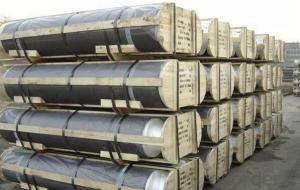When we talk about the applications of graphite in counter electrodes, it’s like diving into a world of possibilities. Imagine a world where every electronic device we use has a little piece of graphite in it, working silently in the background. That’s the reality we live in today. Graphite, a form of carbon, has been a game-changer in the world of counter electrodes. It’s versatile, durable, and has a unique ability to conduct electricity, making it a top choice for various applications.
Let’s start with solar cells. Solar energy is the future, and graphite plays a crucial role in making that future a reality. In dye-sensitized solar cells (DSSCs), graphite is used as a counter electrode material. It helps to improve the efficiency of these solar cells by facilitating the transfer of electrons. The beauty of graphite is that it’s not just limited to solar cells. It’s also used in lithium-ion batteries, where it serves as a current collector, enhancing the performance and longevity of the batteries.
But wait, there’s more! Graphite also finds its way into fuel cells, where it’s used as a catalyst support. This helps to improve the efficiency of the electrochemical reactions taking place within the fuel cell. And let’s not forget about supercapacitors, where graphite, in the form of graphene, is used to increase the energy storage capacity.
Now, you might be wondering, what makes graphite so special? Well, it’s all about its structure. Graphite has a layered structure, which allows for easy movement of electrons. This makes it an excellent conductor of electricity. Plus, it’s chemically stable, resistant to corrosion, and has a high melting point. These properties make it perfect for use in counter electrodes.
But it’s not just about the properties of graphite. It’s also about how we use it. Researchers are constantly exploring new ways to improve the performance of graphite-based counter electrodes. For example, by modifying the surface of graphite with nanoparticles or by using different types of graphite, such as expanded graphite or graphene, scientists are able to enhance the overall performance of these electrodes.
One of the most exciting developments in the field of counter electrodes is the use of 3D-printed graphite structures. This allows for the creation of complex and customized counter electrode designs, which can be tailored to specific applications. The possibilities are endless, and it’s fascinating to see how this technology is pushing the boundaries of what’s possible.
As we continue to rely more on renewable energy sources and energy storage solutions, the demand for efficient and sustainable counter electrode materials will only increase. Graphite, with its unique properties and wide range of applications, is well-positioned to meet this demand. It’s not just a material; it’s a key player in the future of energy.
So, the next time you charge your phone or power your home with solar energy, remember that there’s a little piece of graphite working hard to make it all possible. It’s a testament to the power of innovation and the endless potential of materials like graphite to shape our world.

